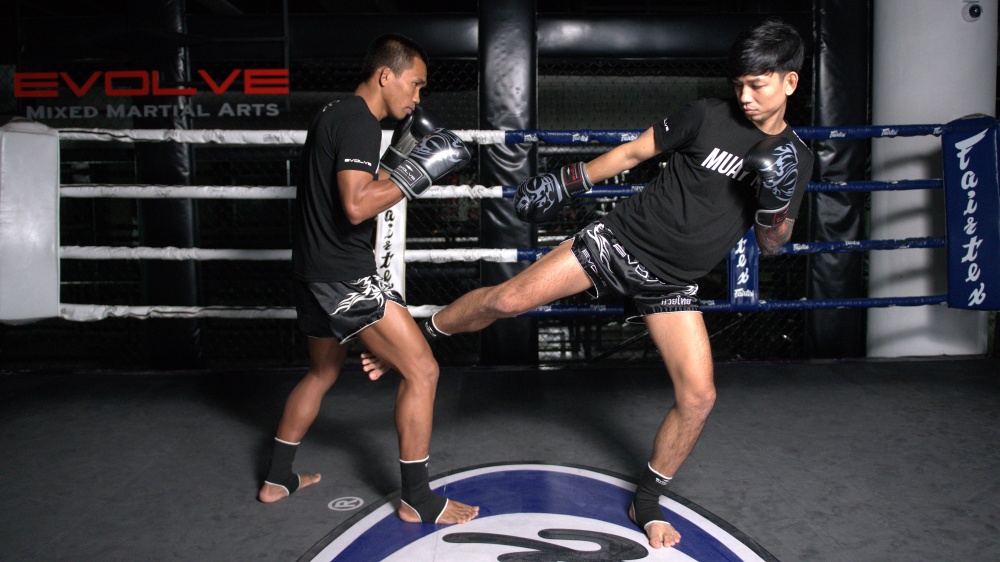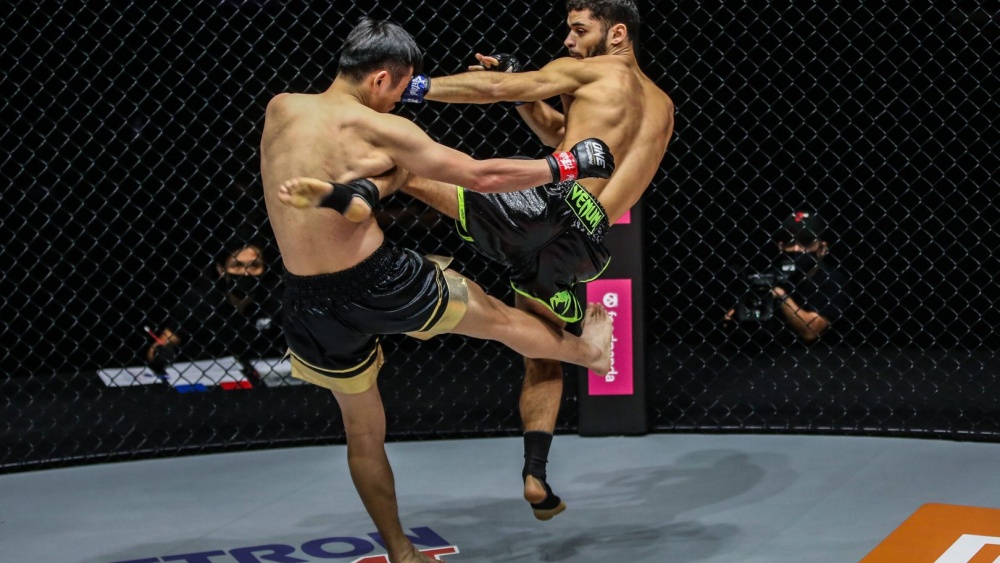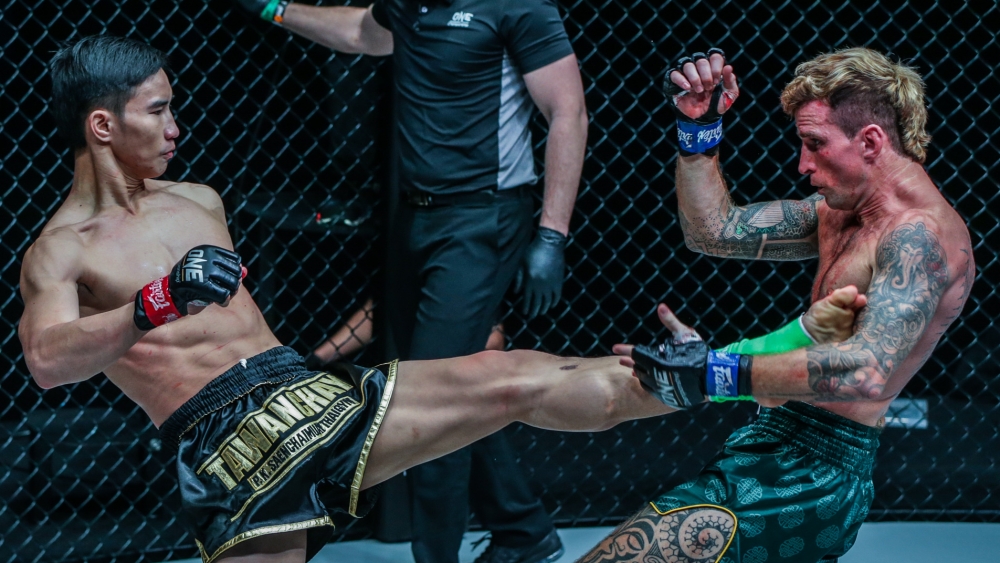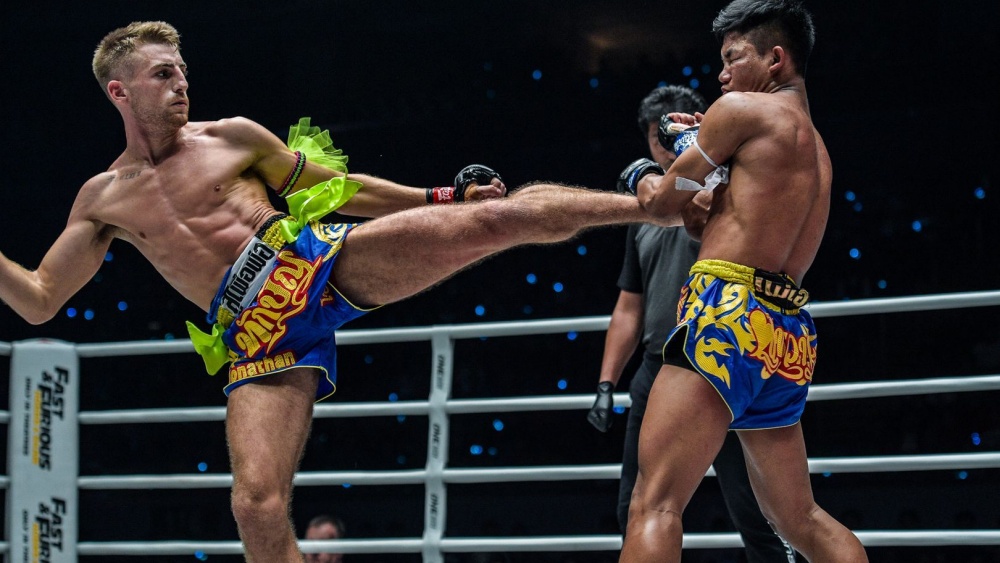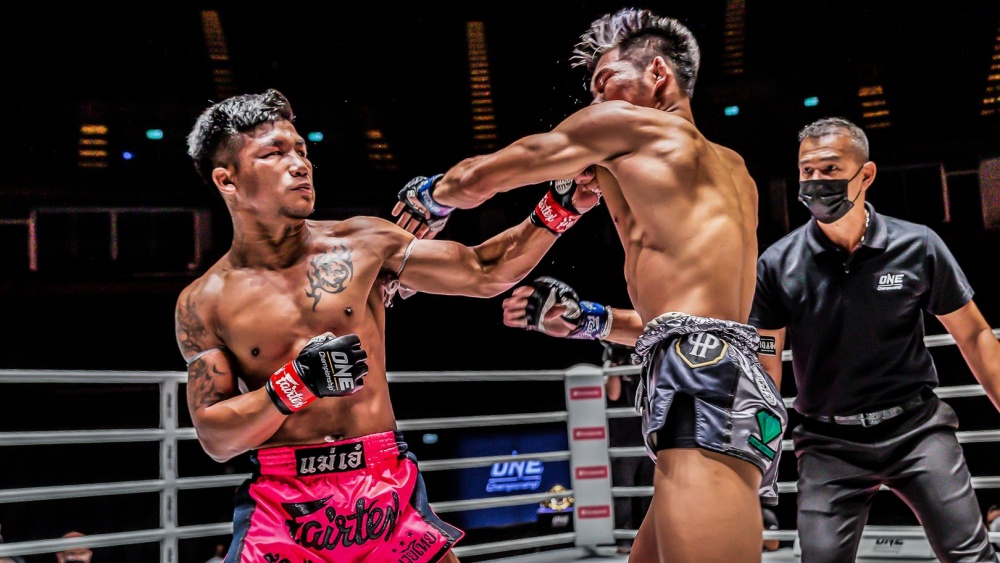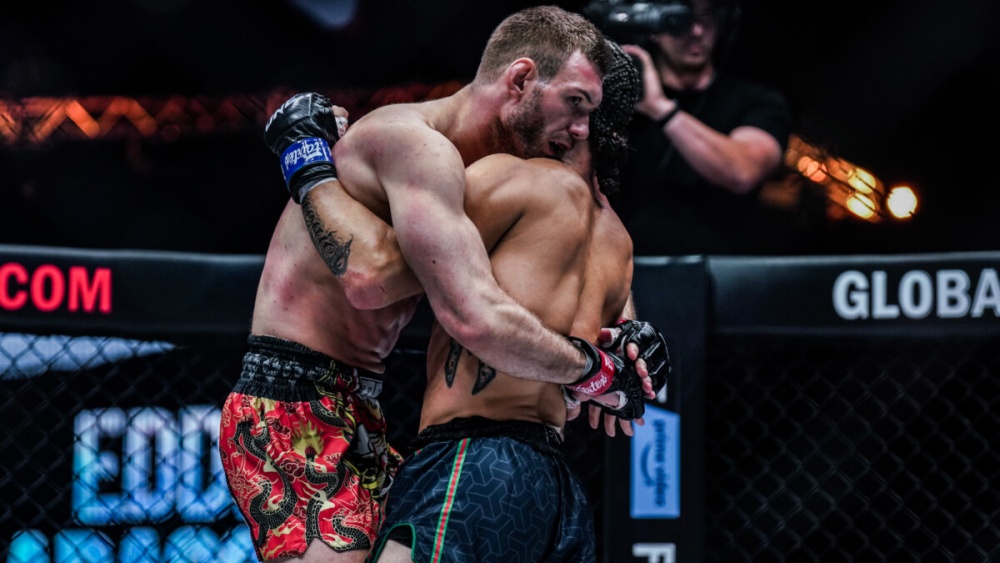Jonathan “The General” Haggerty is a British Muay Thai fighter and reigning ONE Muay Thai and Kickboxing Bantamweight World Champion. Haggerty has an aggressive, but highly cerebral, style that any fighter can learn from. Switch-hitting, ring generalship, and feinting to set up knockouts are a few of the many tenets of Haggerty’s elite striking. Today, Evolve Daily is pleased to share a guide on how to fight like Jonathan Haggerty.
Solid Striking Fundamentals
Haggerty’s dynamic fighting style starts with a solid grasp of striking fundamentals. The General began training Muay Thai from the early age of seven, making his amateur debut at just twelve years of age. Starting Muay Thai, or any combat sport, at an early age has many benefits for the overall development of a fighter. One of these benefits is ingraining stance, balance, and movement patterns to the point where it becomes second nature. This translates to fluidity in the ring; both in terms of movement and composure.
Haggerty’s balance and weight shifting are world-class, optimizing his speed and power to the full extent. He rarely, if ever, overextends, keeping his weight centered and head behind his lead knee. Maintaining balance in your fighting stance allows you to react defensively by pulling or moving your head to avoid your opponent’s strikes.
Balance also plays a critical role in Haggerty’s offensive capabilities. Balance is crucial when throwing multiple punches and kicks in combination. Committing too much of your weight onto your lead leg can result in you being “stuck” after throwing, leaving you open to counterstrikes and sweeps. Above is a video of The General’s highlights in fight against Mongkolpetch Petchyindee at ONE Championship.
Lead Side Probes
Haggerty’s entire fighting style is based on probing with his lead side to set up power attacks. One of his most dangerous and versatile weapons is his lead teep. Haggerty will often start a fight by establishing his teep, akin to how an out-boxer establishes their jab. Haggerty’s teep is an especially well-developed strike, allowing him to fight at the highest level.
Once the teep has landed several times, Haggerty is able to lift his lead knee to feint the teep. From here, Haggerty chooses one of a myriad of follow-ups to exploit any openings in his opponent’s guard.
To close distance off of the teep feint, Haggerty glides forwards on his rear leg while his lead knee is raised. This is called a Thai hop and is used to get into punching or clinching range. When sliding into range with the Thai hop, it is crucial to control your opponent’s hands via a long guard to prevent any counterpunches. Once inside of clinch range, Haggerty often throws his signature strike, the tomahawk elbow.
The lead side switch kick is another probe that “The General” uses to great effect. Due to his narrow fighting stance, Haggerty is able to switch-step very quickly, allowing him to enter exchanges with his lead switch kick. Between his lead teep and lead switch kick, Haggerty is able to prod his opponent’s guard and keep them at range while he gathers information about their fighting style.
Haggerty’s bread and butter is feinting, then working off of his opponent’s reactions. Unlike many fighters who have a couple of feints they employ, “The General ” can feint almost any type of strike. One example is a lead teep feint followed by a rear tomahawk elbow. The teep often gets the opponent to shell up, allowing Haggerty to step into clinch range safely.
Another feint “The General” employs is the rear kick feint followed by a lead leg switch kick. Haggerty lifts his rear knee, feinting a teep or roundhouse kick. He then drops his rear leg to the ground while simultaneously throwing his lead side low kick. Instead of a traditional switch step, Haggerty lifts his rear leg, using the momentum generated by dropping it to add power to his lead side low kick.
Ring IQ
Haggerty’s mental attributes are a key part of his success in the ring. His ring name, “The General”, was given to him due to his skill in ring generalship. The essence of ring generalship is controlling where the fight takes place. Haggerty is able to take the center of the ring for much of the fight, allowing him to dictate where the striking exchange happens. When he is backing up, Haggerty is careful to move away from his opponent’s power side, limiting their offensive capabilities. When his opponents finally close distance to clinch range, Haggerty sweeps them and retakes the center of the ring. With the same video from fightTips, at 0:50 seconds, Shane Fazen will explain Haggerty’s Fight IQ used in the ring.
Stance Switching
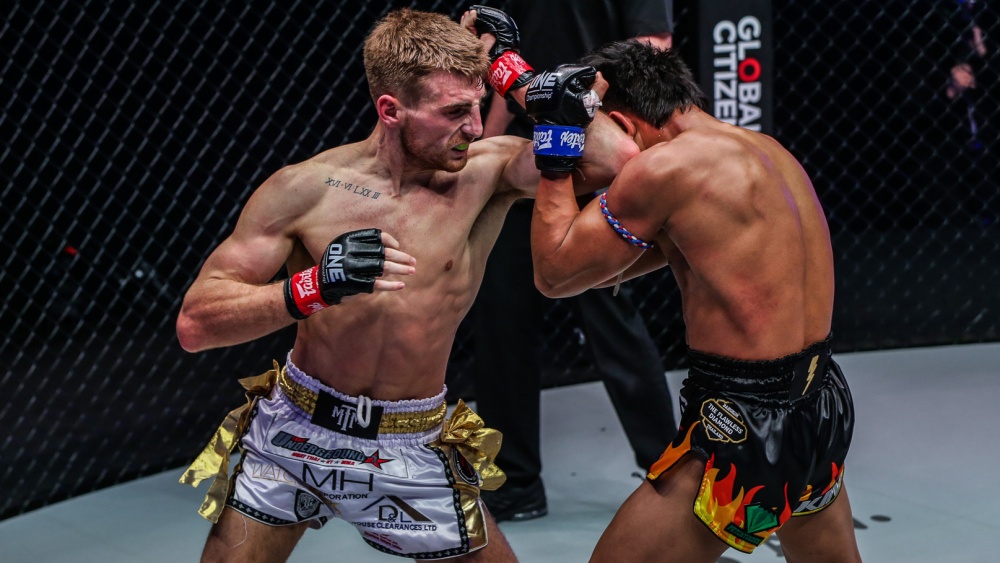
Stance switching is an advanced striking concept that few fighters are truly adept at. This is because simply learning the mechanics for both stances takes much longer than focusing on a single stance. Haggerty’s method of switching stance is quite unique; he is momentarily switching to change angles or aid movement. He will often step backward into a southpaw stance after he kicks with his lead leg. This adds to the many other layers of movement that his opponents need to keep track of.
After stepping back into a southpaw stance, Haggerty will often throw a left teep as he steps forwards, back into an orthodox stance. This allows Haggerty to add massive power to his left teep while popping in and out of range. The step backward into southpaw position often draws opponents into attack. Haggerty times the forward movement of his opponent with his loaded teep, creating a head-on collision. While this is not the most damaging strike, it does often push the opponent off balance, leading to more striking opportunities. Below are three combinations to practice in shadowboxing and the heavy bag that emulate Haggerty’s highly effective fighting style!
- Switch Kick – Step Back Switch – Fake Rear Teep – Switch Forward – 1 – 2
- Lead Teep – Step Back Switch – Fake Rear Teep – Switch Forward – Rear Elbow
- Switch Low Lick – Switch Step Back – Switch Step Back – Switch Forward + Lead Teep Feint – Rear Tomahawk Elbow – Switch Step Forward
Conclusion
“The General’s” distinct style has been effective against the highest level of competition. Incorporating the above concepts into your own training and fighting style will allow you to elevate your overall striking ability. Let us know which techniques are your favorites!
You may also like:
4 Reasons Why You Rarely See An Undefeated Muay Thai Champion
